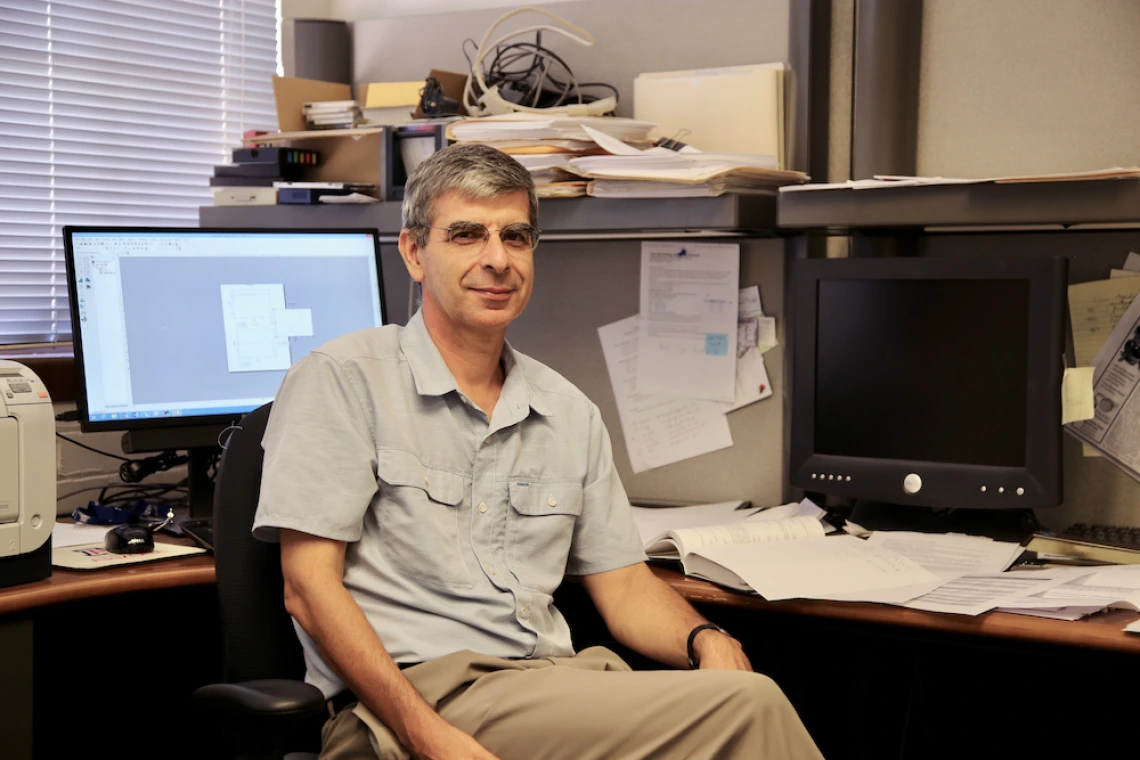Tech Blog: College of Engineering Faculty Advance the World of Quantum Computing

| Listen to the third episode of our podcast, Invented Arizona, where we speak with Pierre Deymier and Keith Runge about their improvements in quantum computing.
|
By 2020, the high-performance computing marketing (HPC) is expected to reach a value of $36.62 billion [1]. And with current research efforts focusing on both quantum software and hardware, the time is right for inventors like Pierre Deymier and Keith Runge, Department Head and Director of Research respectively in the Department of Materials Science and Engineering at the University of Arizona, to join the race [2].
In quantum computing the standard digital computing bit is known as a qubit and can simply be classified as either a one, a zero, or both. This is called the “superposition of states.”
Unfortunately, the state of these qubits is threatened by an issue called decoherence, which is the process of destroying their superposition of states due to exposure to a variety of external conditions including heat or electromagnetic radiation. A quantum computer consists of multiple qubits in an overall superposition, which can also experience decoherence, creating additional risk to the stability of the system.
| Learn more about Pierre Deymier. |
|
|
 Learn more about Keith Runge. Learn more about Keith Runge. |
To combat this Deymier and Runge have developed new quantum computing analogues that they are calling “phi-bits”, which exhibit the same capabilities of having superposition of states, but do not have the drawback of decoherence, therefore improving the stability of quantum information processing.
“We do not need quantum objects to create superposition of states. We have found a system that does that and is based on a phononic structure that basically is supporting soundwaves instead of electronic waves or other kinds of quantum waves,” says Deymier.
Because these phi-bit charges exist by leveraging directional sound waves rather than traditional electronically driven charges, they eliminate the current standard of keeping qubits at cryogenic temperatures to prevent decoherence, a process that results in massive energy costs.
And in just what applications should we expect to see this new technology successfully implemented? Runge believes the power of quantum computing is exponential when it comes to advances in big data: “Quantum computers, joined with big data, leads to the possibility of very rapid examination of correlations in big data and then new insights that the data can generate, much faster than a digital computer.”
In early 2017 Deymier and Runge were awarded a joint grant of $1.8 million from the W.M. Keck Foundation(link is external) and the University of Arizona to continue their quantum computing research in collaboration with Pierre Lucas, another professor in Materials Science & Engineering.
The award will involve three years of work to produce additional functioning phi-bits, and Deymier and Runge are hopeful that they will have a fully operating tabletop system by the end of the period.
To learn more about this technology, visit:
UA17-138 Phonon Based Room Temperature Quantum Computer
To learn more about other quantum computing technologies available from the University of Arizona, visit:
UA16-149 Tunability of the Phase in Quantum-Like Mechanical Elastic Systems
UA16-064 Using Quantum-Like Behavior of Elastic-Waves for Quantum Computing Using F-Bits
Listen and Learn: Listen(link is external) to episode 3 of the Invented Arizona Podcast, featuring this technology!
Resources:
[1] MarketsandMarkets.(2016Feb).HighPerformanceComputingMarketbyComponentsType, Services, Deployment Type, Server Price Band, Vertical, & region – Global Forecast to 2020. MarketsandMarkets. Accessed from: http://www.marketsandmarkets.com/Market-(link is external) Reports/Quantum-High-Performance-Computing-Market-631.html
[2] Svore,KrystaM.,Troyer,Matthias.(2016Sept).TheQuantumFutureofComputation.IEEE Computer. Accessed from: http://ieeexplore.ieee.org/document/7562328/?reload=true (link is external)


